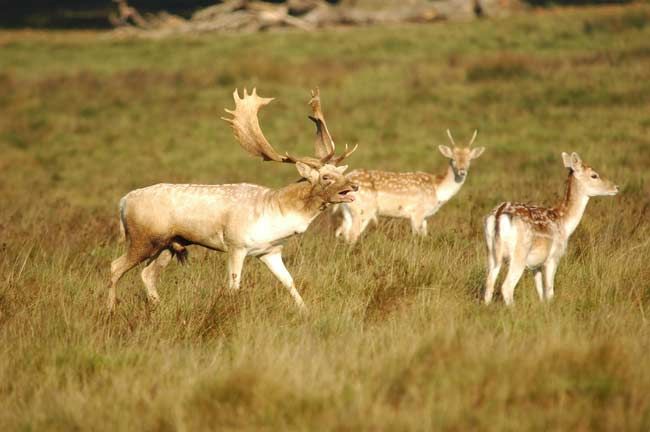Deer Disoriented by Power Lines

To aesthetes, high-voltage power lines are a blight on the rural landscape. But zoologists at the University of Duisburg–Essen in Germany welcome them as a tool for testing the power of large ruminants to perceive Earth's magnetic field.
Last year, a team led by Hynek Burda and Sabine Begall discovered that free-ranging cattle and deer tend to align their bodies in a north–south direction. The animals sure seemed to be responding to the geomagnetic field.
If so, the zoologists reasoned, they should lose their orientation when they graze or rest near power lines, because the current passing in the lines distorts Earth's magnetic field. If not, and the animals are reacting instead to the sun or some other cue, power lines should have no effect.
By observing wild roe deer and studying aerial images from Google Earth of cattle in European fields, Burda, Begall and three colleagues confirmed their hypothesis.
In general, the animals faced every which way near the lines. (East–west power lines were an intriguing exception; cattle tended to align with them, for reasons still unclear.) What's more, cattle gradually regained their north–south body orientation the farther they moved away from the lines.
The study is the first strong demonstration of magnetic alignment in mammals other than rodents or bats. An internal compass could well be handy equipment in the roaming lifestyle of grazing animals.
The findings were published in the Proceedings of the National Academy of Sciences.
Sign up for the Live Science daily newsletter now
Get the world’s most fascinating discoveries delivered straight to your inbox.
- Cows Have Strange Sixth Sense
- Birds May See Earth's Magnetic Fields
- Video: Bird GPS and Night Vision











